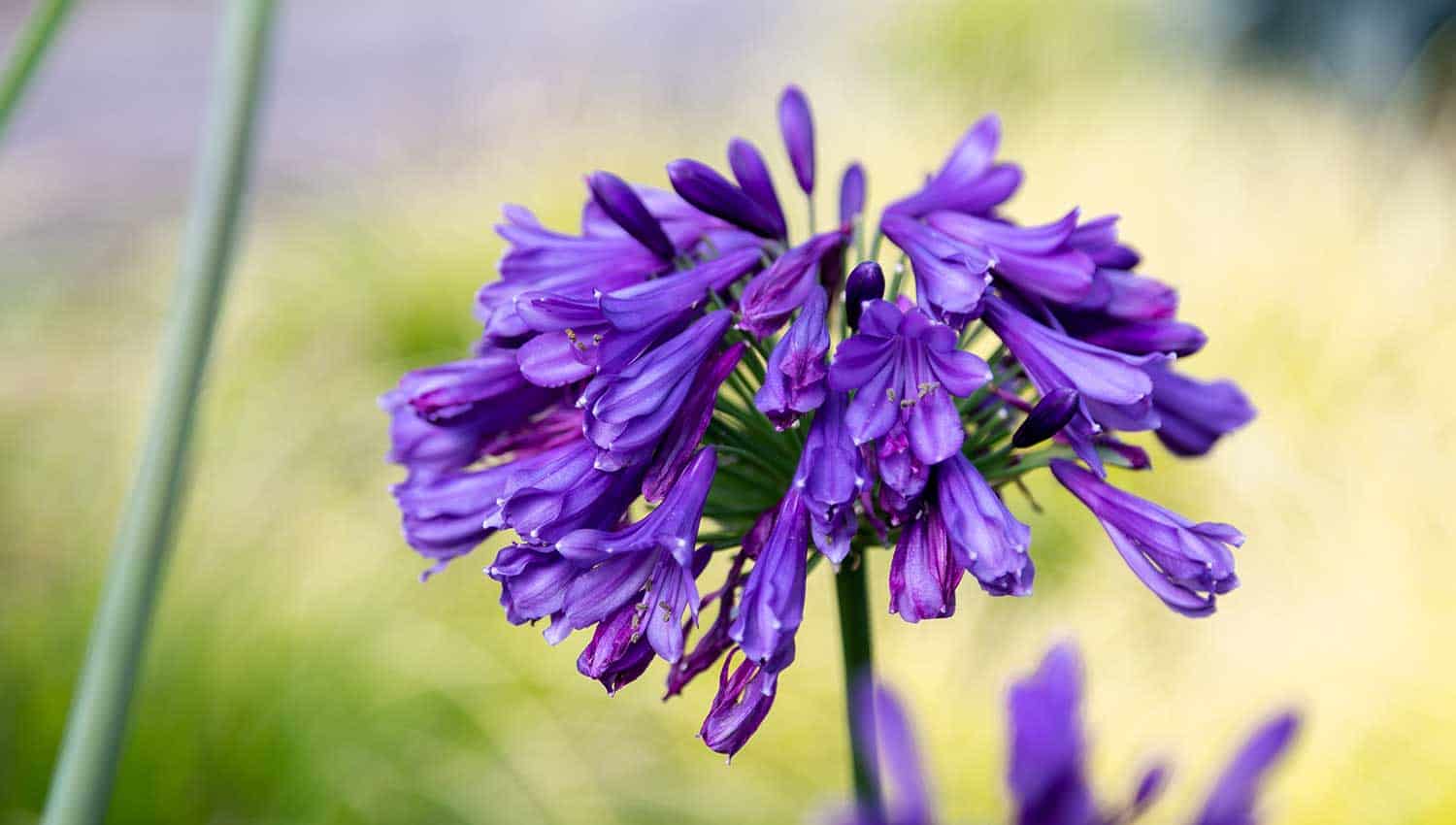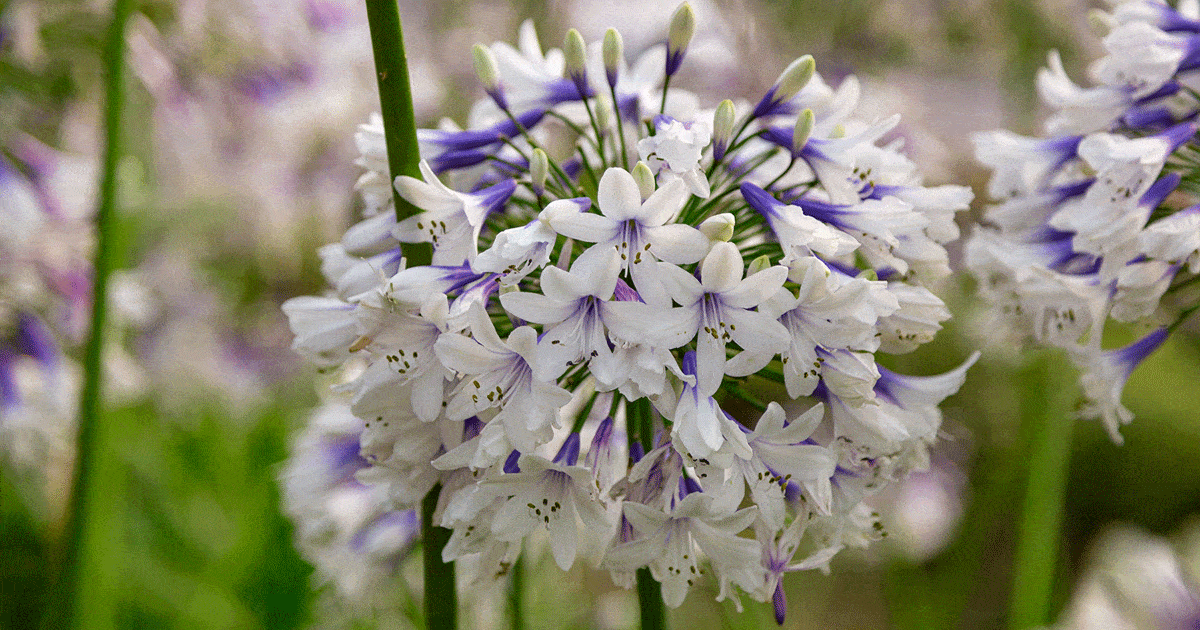Agapanthus Expanding Problems: Dirt, Sunlight, and Watering
Agapanthus Expanding Problems: Dirt, Sunlight, and Watering
Blog Article
Grasping the Art of Agapanthus Care: Crucial Steps for Healthy And Balanced Growth and Dynamic Blossoms
In the world of horticulture, the farming of agapanthus stands as a fulfilling endeavor for those who seek to support these stylish flowering plants. With their striking blossoms and elegant foliage, agapanthus has recorded the interest of gardeners worldwide. However, attaining optimal development and vivid blooms needs a nuanced strategy that encompasses numerous crucial actions. From choosing the ideal variety to grasping trimming strategies, the trip in the direction of growing prospering agapanthus plants is complex and holds the crucial to opening the full possibility of these herb gems.

Selecting the Right Agapanthus Selection

When picking the appropriate Agapanthus variety for your garden, take into consideration aspects such as climate suitability, blossom shade, and growth routine. Agapanthus, commonly known as Lily of the Nile or African lily, is available in a variety of shades varying from tones of purple and blue to white. Choose a blossom shade that complements your existing garden scheme to create an unified landscape. Additionally, think about the climate in your area to guarantee the Agapanthus variety you choose can prosper in your specific problems. Some ranges are more forgiving of chilly temperatures, while others prefer warmer climates. Comprehending the growth behavior of different Agapanthus ranges is crucial for correct placement within your yard. Some selections have a clumping growth behavior, suitable for borders or containers, while others have an even more spreading nature, suitable for ground cover or mass plantings. By thoroughly reviewing these factors, you can select the best Agapanthus range to enhance the beauty of your yard.
Ideal Planting Problems
Considering the optimum environmental demands is crucial for successful Agapanthus farming. Agapanthus grows in well-draining soil with a slightly acidic to neutral pH level. When growing, choose a place that obtains full sunshine to partial shade. In hotter climates, giving some mid-day shade can prevent scorching of the leaves. Agapanthus plants are delicate to chilly temperatures and must be safeguarded from frost during cold weather.
To make certain healthy and balanced growth and dynamic blooms, plant Agapanthus bulbs at a depth of concerning 2-4 inches and room them 8-12 inches apart. Mulching around the base of the plants aids preserve moisture and subdues weed growth.
Watering and Feeding Tips
Maintaining correct wetness degrees and giving important nutrients are crucial elements in the care program for Agapanthus plants. When it concerns watering Agapanthus, it is vital to strike a balance. These plants favor consistently wet dirt however are prone to root rot if overwatered. Throughout the growing period, water deeply once a week, making certain the soil is well-draining to stop waterlogging. In hotter environments or during durations of drought, more constant watering might be essential to maintain the soil evenly moist. Nonetheless, reduce watering in the winter to protect against water logged problems.
Feeding Agapanthus is crucial for promoting healthy and balanced development and prolific blossoms. Apply a balanced fertilizer, such as a 10-10-10 formula, in the very early springtime as new growth arises. Repeat this application every 6-8 weeks throughout the expanding period. Avoid too much fertilization, as it can bring about rich vegetation at the expense of flowers. Constantly follow the maker's directions for appropriate dilution and application approaches. By following these watering and fertilizing tips, you can guarantee your Agapanthus plants thrive and generate vivid, lasting flowers.
Trimming Strategies for Agapanthus
Pruning more info here Agapanthus plants at the appropriate times and with proper techniques is important for preserving their health and wellness and promoting optimal growth and flowering. The optimal time to trim Agapanthus is in late wintertime or very early spring before brand-new development arises.
Deadheading spent blossoms can additionally redirect the plant's power right into generating even more blooms instead than setting seeds. If you want to gather seeds for propagation, leave some flowers to fully grown and dry on the plant.
Keep in mind to use tidy, sharp tools to make accurate cuts and lower the threat of presenting illness. Agapanthus. Normal pruning will help maintain your Agapanthus looking healthy and balanced and neat while ensuring a plentiful display of gorgeous flowers
Managing Common Bugs and Conditions
After making sure proper pruning methods for Agapanthus, it is vital to address usual pests and diseases that can influence the health and wellness and vigor of these plants. Agapanthus plants are generally sturdy however can still succumb to particular concerns. One common parasite that affects Agapanthus is the Agapanthus gall midget. This little, orange fly lays its eggs in the vegetation, causing distorted growth and blossom buds that stop working to open up. To battle this parasite, trim and ruin any type of affected plant parts and consider utilizing insecticidal soap.
Another usual problem is fungal fallen leave spot, which provides as dark lesions on the fallen leaves. To protect against fungal diseases, make sure good air flow around the plants, prevent above watering, and get rid of any type of infected leaves immediately. Furthermore, Agapanthus plants can experience origin rot if my latest blog post they are planted in improperly draining pipes soil. To avoid this, plant Agapanthus in well-draining soil and prevent overwatering. By being cautious and taking prompt activity against bugs and diseases, you can help your Agapanthus plants thrive and generate lively blooms.

Conclusion
To conclude, understanding the art of agapanthus care involves choosing the best variety, offering perfect growing problems, proper watering and fertilizing, appropriate trimming strategies, and attending to common insects and illness. By adhering to these vital actions, you can guarantee healthy and balanced development and vivid blossoms for your agapanthus plants. Remember to frequently keep track of and preserve your plants to advertise their overall wellness and durability.
To make certain healthy development and lively flowers, plant Agapanthus bulbs at a deepness of regarding 2-4 inches and area them 8-12 inches apart. By complying with these watering and feeding suggestions, you can guarantee your Agapanthus plants flourish and create vibrant, lasting internet flowers.
One typical bug that affects Agapanthus is the Agapanthus gall midge. Furthermore, Agapanthus plants can suffer from origin rot if they are grown in poorly draining dirt. By adhering to these necessary steps, you can ensure healthy development and vibrant blooms for your agapanthus plants.
Report this page